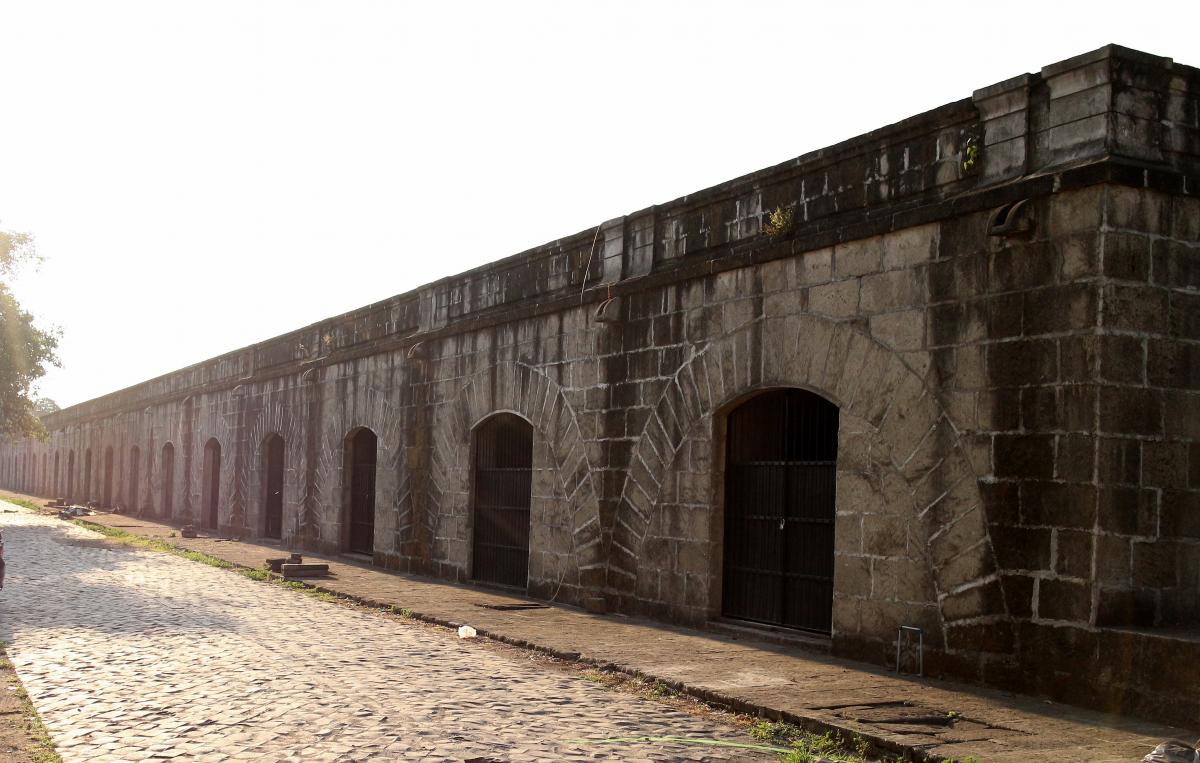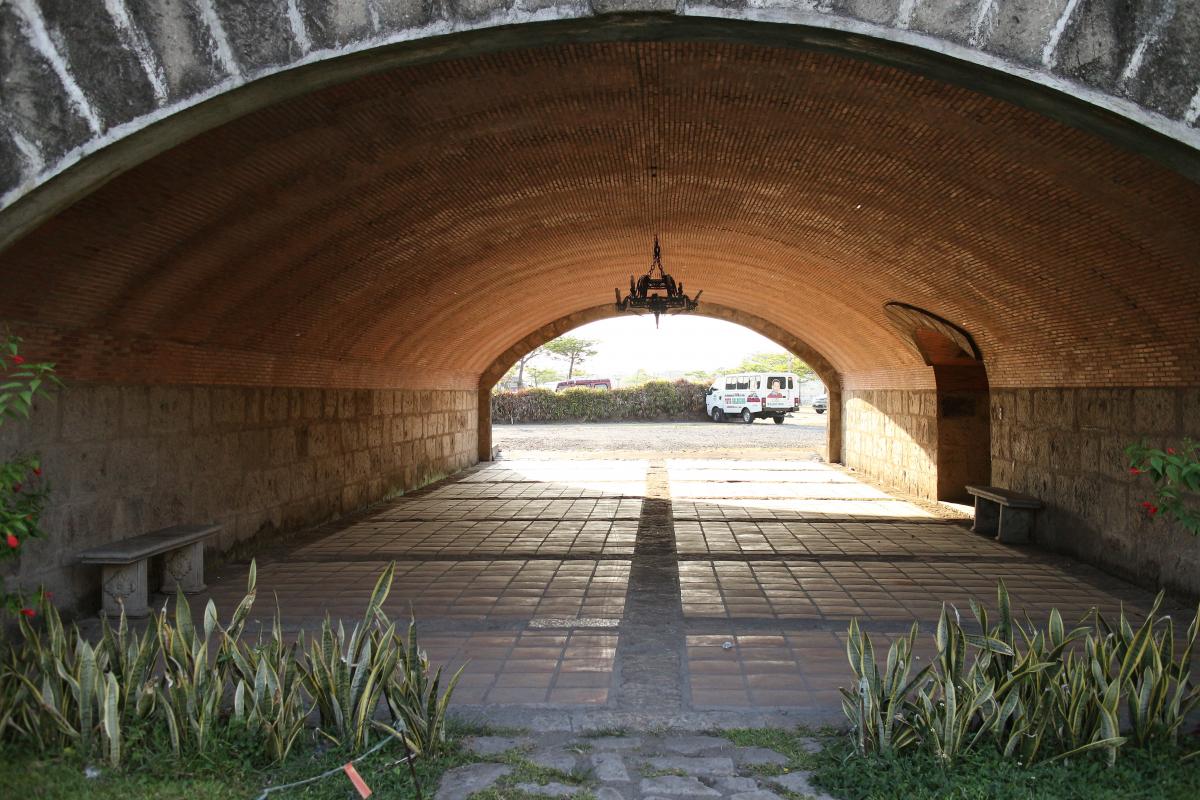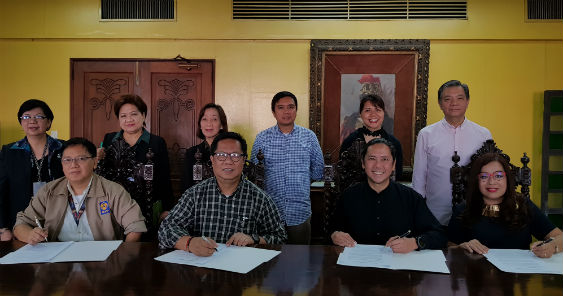The Intramuros Administration (IA) and the Creative Economy Council of the Philippines (CECP) last January 25, 2018 have signed a Memorandum of Agreement (MOA) to turn the Maestranza Complex in Intramuros into a creative hub.
The agreement lets the CECP conceptualize and develop a creative hub in the Maestranza Complex which is currently being rehabilitated as part of the conservation program of the IA. Part of the agency’s plans for conservation is to develop the whole of Intramuros as a creative heritage district.
The Maestranza Complex is situated at the Pasig riverfront, occupies around 2-3 hectares, spans about 270 meters long, and contains 44 chambers. This part of the Intramuros wall used to be a storehouse and barracks for soldiers in the 1500s. It was destroyed during World War II, and today, it is the last connection of the wall to be restored and reconstructed. The IA is now pursuing completion of work on the complex which has been going on for the past six years.

“For Intramuros, the [plan for the] next five years is to be a dynamic, resilient, and creative heritage district, so we are now preparing a conservation management plan for the whole district. We want to create a new narrative for Intramuros. We all have our own memories of what Intramuros was, but what we wanted to do right now is to set it at par with the other heritage districts of other countries where there is an element of creativity,” said IA Administrator Atty. Guiller Asido.

Asido said that the agency decided to partner with the CECP because of its advocacy in building creative hubs and growing the creative economy as well as its recent success in helping Baguio City to become a UNESCO Creative City. “We learned about the CECP from the Design Center of the Philippines. They introduced us to the group, and we also learned about them from the Regional Director of the Department of Tourism-Cordillera. [The CECP] was very much responsible for having Baguio City designated as a Creative City of UNESCO so we decided that the next hub should really be in the heart of Manila — Intramuros,” Asido stated.
On its part, the CECP saw the potential of establishing an internationally recognized creative hub in the country’s capital and in a historical and cultural district at that. “Part of the agenda of developing a recognized creative economy is the development of internationally recognized creative hubs. What the creative Philippine economy needs is a place where people can say, ‘Philippine creativity lives here.’ What better place than Intramuros which to a great extent, is the birthplace of Philippine history and Philippine culture, because it blends not only the Spanish period and the pre-Hispanic culture and even the Chinese and the American times. They all centered at one point on Intramuros. So that’s when the thinking that this would be an ideal place to showcase to an international community is that if you want to discover Filipino creativity, this is the place where you can see it,” said CECP President and Nestle Philippines SVP – Marketing, Communication & Innovation Paolo Mercado.
For Mercado and the CECP, placing a creative hub in the historical and cultural district of Intramuros sends the message that creativity is deeply rooted in Filipino culture. “In hosting a creative hub within an iconic heritage site, it does send that deep message that the creativity is rooted in our culture and that’s what makes it unique. That’s what makes it an identity. That makes it different from any other creative hub,” he stressed.
After the MOA signing, the CECP is set to work on the concept and business model for the Maestranza creative hub. Part of the concept will include utilizing the 44 chambers of the complex as galleries, film-showing and performance venues, concert venues, showrooms, and other spaces for showcasing Filipino creativity. “Imagine it as a permanent Manila Fame — showcasing the best of whether it is fashion, furniture, object, or lifestyle design. But beyond retail, what’s important is to have it as an education center — as a place where you can do workshops, as a place where you can learn, can invite world-class speakers in order to uplift Philippine design. We will consider also places for dining, etc. to encourage people to linger, but of course compliant with the overall design of Intramuros,” Mercado said.

Asido also stressed that the complex will stay true to its purpose as a creative hub. “What we are avoiding is a situation that it becomes an ordinary commercial complex. Everyone had this notion that it’s just gonna be another row of restaurants, shops, parking, but there’s more value to that if you add a creative element. By adding the creative element, you’re adding value to the history of the area,” he said.
——
On main photo:
MOA signatories (L-R): Mr. Edgardo Baysic, Planning Division Chief, Intramuros Administration; Guiller Asido, Administrator, Intramuros Administration; Paolo Mercado, President, Creative Economy Council of the Philippines; Angel Guerrero, Co-Founder, Creative Economy Council of the Philippines








